Since the Islamic Revolution, two groups of feminists have taken a stand against discrimination. In various areas, their fight for equality has borne fruit – the increased repression will not stop the striving for freedom.
In 2018 Iranian women meet for the public viewing of the soccer World Cup. Women are not allowed to participate in men’s sporting events in Iran.
The nationwide protests following the death of 22-year-old Mahsa Amini represent another high point in the decades-long struggle for freedom, equality and social justice in Iran. Mahsa’s only crime: she did not wear her headscarf in accordance with the regulations. She was not politically active, had not rebelled, led a simple life. Nevertheless, she had to pay with her life for a tiny, futile attempt at self-determination.
Outrage at this appalling crime has released pent-up anger at a regime that has been trying in vain to impose its ideology on the people for 43 years. The latest protests are the result of the collision of two worlds that are alien, even hostile, to each other.
In hardly any other country in the world is the struggle between tradition and modernity as visible and tangible as in Iran, a struggle that has escalated to such an extent that there are hardly any links between the ruling Islamists and civil society. One gradually gets the impression that the country is being ruled by an occupying power.
Repression has increased sharply since Ebrahim Raisi took power in August 2021, people are desperate, they cry out their anger: “Down with the dictatorship”, “Woman, life, freedom” has been echoing throughout the country for days. There is no reconciliation between these crowds that line the streets and the turbaned, bearded men who once proclaimed heavenly tidings for a bounty and have now attained enormous wealth.
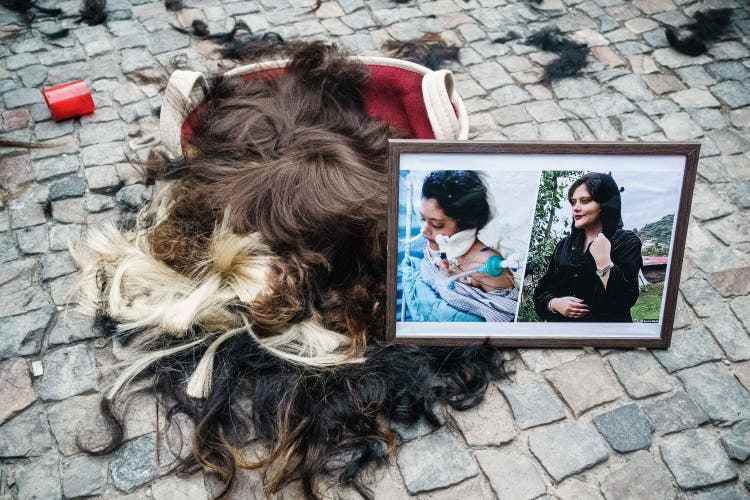
At a rally in Berlin, women cut their hair – a sign of protest against the Iranian regime. The photograph on the left shows Mahsa Amini in the condition in which she was admitted to the hospital.
The Islamic Republic is caught in this dilemma. The resentment among the population, which started out quietly at first and grew louder from year to year, set the course for a polarization of Iranian society after the death of Ayatollah Khomeiny.
Women and young people were at the forefront of the emancipatory movement. Because they were the target of the new Islamic rulers from the very beginning. Islamic morality and male-dominated legal concepts should be imposed on women, and youth should be raised to be devout believers and sacrificial partisans of the theocratic state.
Deployment behind the front
Paradoxically, it was the Islamic revolution that paved the way for women into society. She called on the women to take part in mass demonstrations, it was women who brought the messages of Ayatollah Khomeiny to the people on cassettes and also weapons, hidden behind their veils. In the eight-year Iran-Iraq war, too, women were deployed en masse behind the front lines.
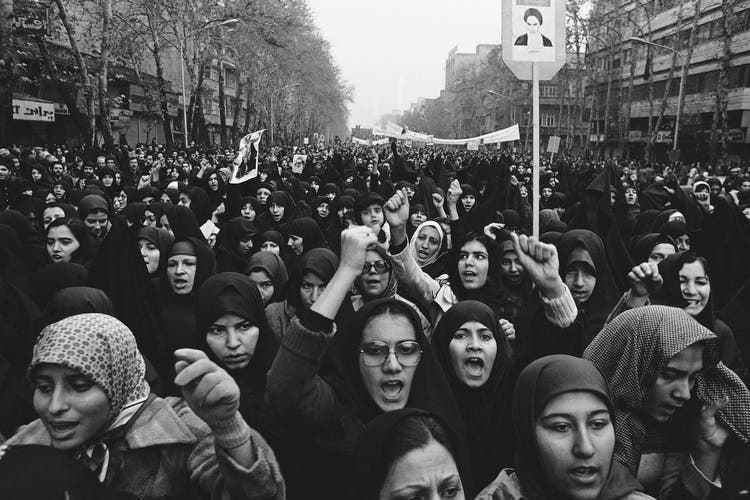
Women take part in a demonstration against the Shah in Tehran in December 1978.
Once out of the house, they didn’t want to go back. When Ayatollah Khomeiny hinted at the introduction of the hijab after taking power, there were violent protests. In the capital Tehran alone, tens of thousands of women, supported by men, took to the streets. The pressure was so great that the new rulers felt compelled to withdraw. But later, when the protests were over, dress codes were officially decreed and family rights were severely changed to the detriment of women.
On the other hand, the women fought back. There were two currents inside and outside the Islamic camp. Influenced by the ideas of the reformers, the first group took the view that “true Islam” was perfectly compatible with gender equality, it was a matter of reading. One does not have to read the Koran from the point of view of people 1400 years ago, but from the perspective of people in the 20th century.
It was remarkable that the followers of this group described themselves as “Islamic feminists”. “We are feminists and we want the same thing that feminists in the West want, but we also want to keep our faith,” said one activist. When asked how these demands could be reconciled with the statements in the Koran, she specified: “Either these statements are misinterpreted, or they are outdated and must be deleted.”
Door-to-door campaign
The second current sees no possibility of achieving equality within the framework of the Islamic Republic. The prevailing ideology, which forms the basis of the theocracy, is not compatible with equality. There were often heated arguments between the two currents, but there were also joint campaigns.
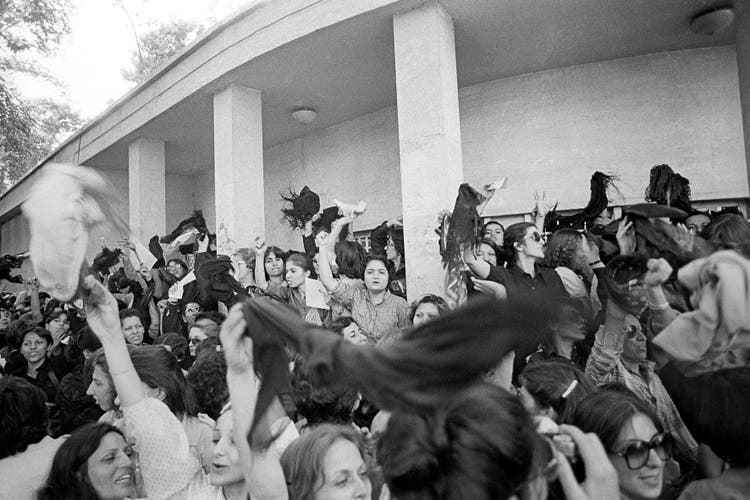
Tehran, 1980: A group of women demonstrate against the headscarf.
Especially in the era of Mohammed Khatami’s presidency (1997-2005), several magazines dealing with women’s rights were created within a short time. The magazine “Zanan” (Women), published by the Islamic feminist Shahla Shokat, played a central role. The magazine became a forum in which not only Islamic but also secular women took part. “Iranian women are not forced to adopt the experiences of women in the West and use their recipes, but we cannot do without the experiences of other countries either,” Shokat said.
The joint activities of the two currents included the “One Million Signatures” campaign, which was launched in 2006 to abolish laws that discriminated against women. “Women want to live in an open, free society where they feel safe. They want to have the same opportunities as men, they feel any discrimination as torture,” the initiators explained.
«Women and girls who live in our country want to free themselves from the constant fear of being exposed to oppression and violence, they want to be independent, want to have an equal say in decision-making, choose their job, their place of residence and decide for themselves where they travel want. It’s easy. If women’s rights and needs are not accepted, there will be no peace.”
Hundreds of women made their way across the country, went from house to house, spoke to people on the streets, in buses and shared taxis, went to newspaper offices, to mosques, to weddings and funerals, in short: wherever they could meet women. But the regime did not tolerate the action, some activists were arrested and sentenced to prison for “riot”.
Wrong image in the West
Still, the women continued their struggle. Some demonstratively took off their headscarves in public places as a symbol of oppression. Especially in the last few months, during which the moral police carried out stricter controls, the women have intensified their activities and achieved that the hijab is now being seriously and publicly discussed in Iran.
The struggle of women for their rights is now bearing fruit. Although they have by no means achieved their goals, they have conquered many areas, including universities and colleges, where they currently make up more than 60 percent of the students, even if this is related to the gender segregation at universities. Today, numerous women in administration, even in business, have important managerial positions. In the western media, the image of women bowing, humiliated and covered in veils to the dictates of men is often spread. But it does not correspond to the real situation of women in Iran.
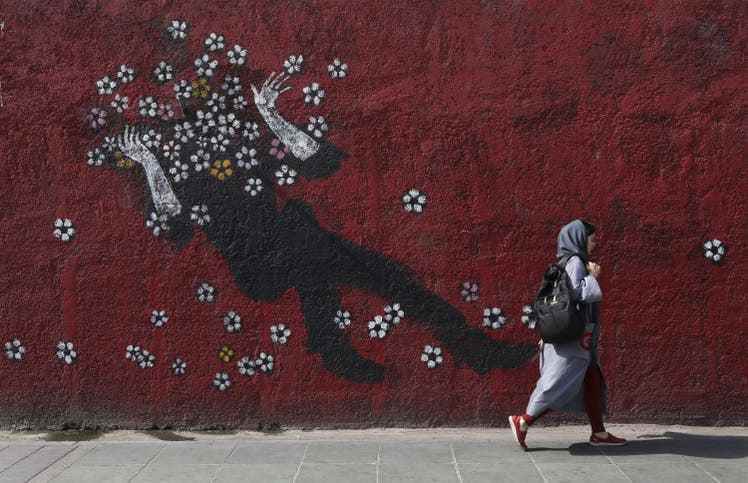
Women are far from achieving equal rights, but thanks to their struggle, they are well represented at the university, in business and in administration. Woman in Tehran, 2019.
The Islamists have failed not only with their women’s policy, but also with their attempt to make younger generations a stable pillar of their desired theocracy. Those young people who were once enthusiastic about the revolution and ready to die as martyrs went to war against neighboring Iraq to defend Islam and their fatherland have long since turned their backs on the Islamists by a large majority.
Today’s young people are not politically active and active against the regime. But what makes them dangerous from the Islamists’ point of view is their view of life, ideals and needs, which are contrary to the ideas of the mullahs. Just like their peers all over the world, they want to be free, want to have fun in life, pursue a career, and freely develop their talents.
struggle in culture
Artists, musicians, writers, filmmakers, journalists and especially young people and women are the Achilles’ heel of the Islamic Republic. Since the regime does not allow any independent political organisations, trade unions or professional associations outside of the Islamic camp, the struggle – with the exception of mass protests and strikes – is mainly being waged on a cultural and social level.
Works of art and music, films, books spread more or less unnoticed by the censors like a swarm of viruses and decompose the substance of the theocracy. The rulers are aware of what a novel, a film, a theater performance, even a single poem, even imaginative jokes can do. You speak of an invasion of the West and warn of a Western-led “velvet revolution” that is far more dangerous than an open armed confrontation.
So far, more than 37 demonstrators have been killed in the protests. It is likely that the ruling theocrats will be able to stifle the angry screams of the protesters this time with their machinery of violence, because the movement is spontaneous, it has no organization and no leadership. The men of God will kill more people, torture and execute prisoners. But they will not be able to stop and kill the striving for freedom and justice.
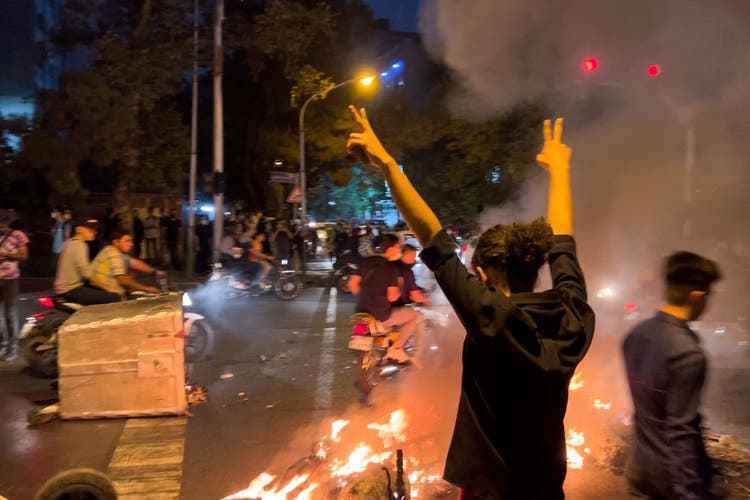
The death of 22-year-old Mahsa Amini has released pent-up anger at the regime. Protests in Tehran, September 19, 2022.
Bahman Nirumand, Born in Tehran in 1936, he had to leave his homeland at the age of 30 due to his political commitment and established himself as a publicist and author in German exile.
